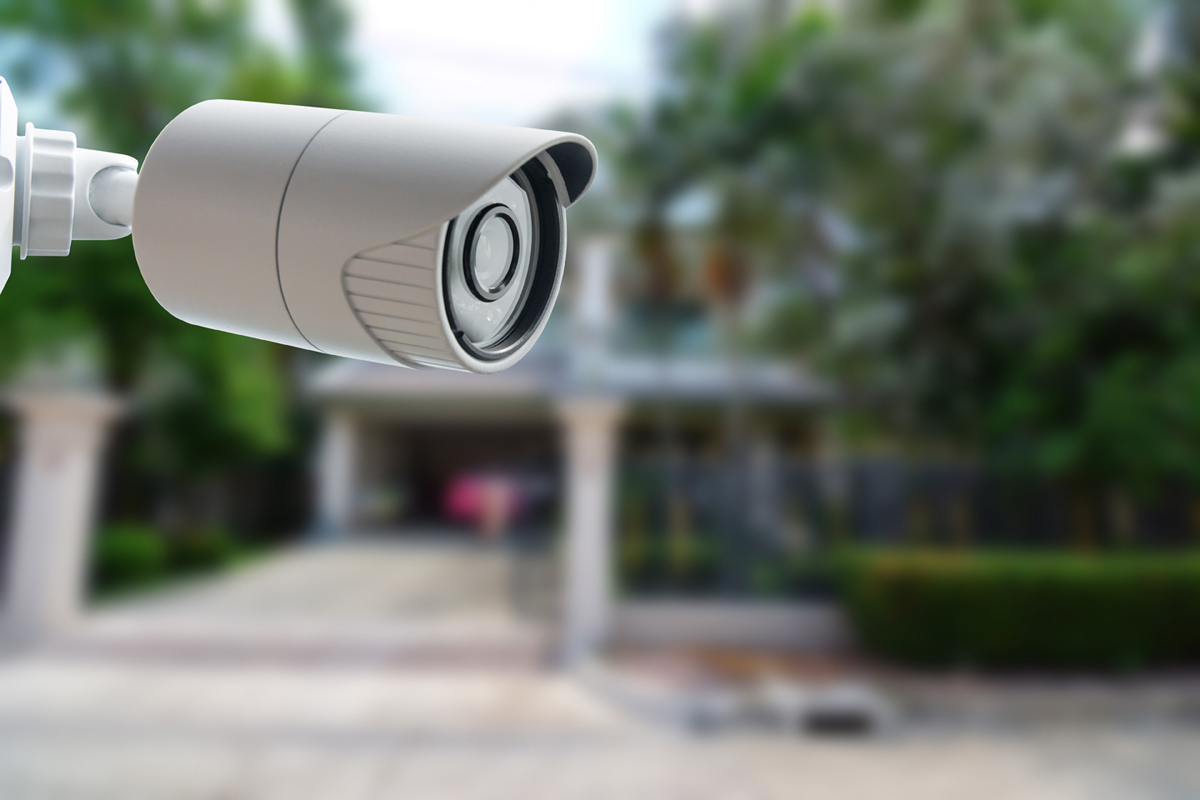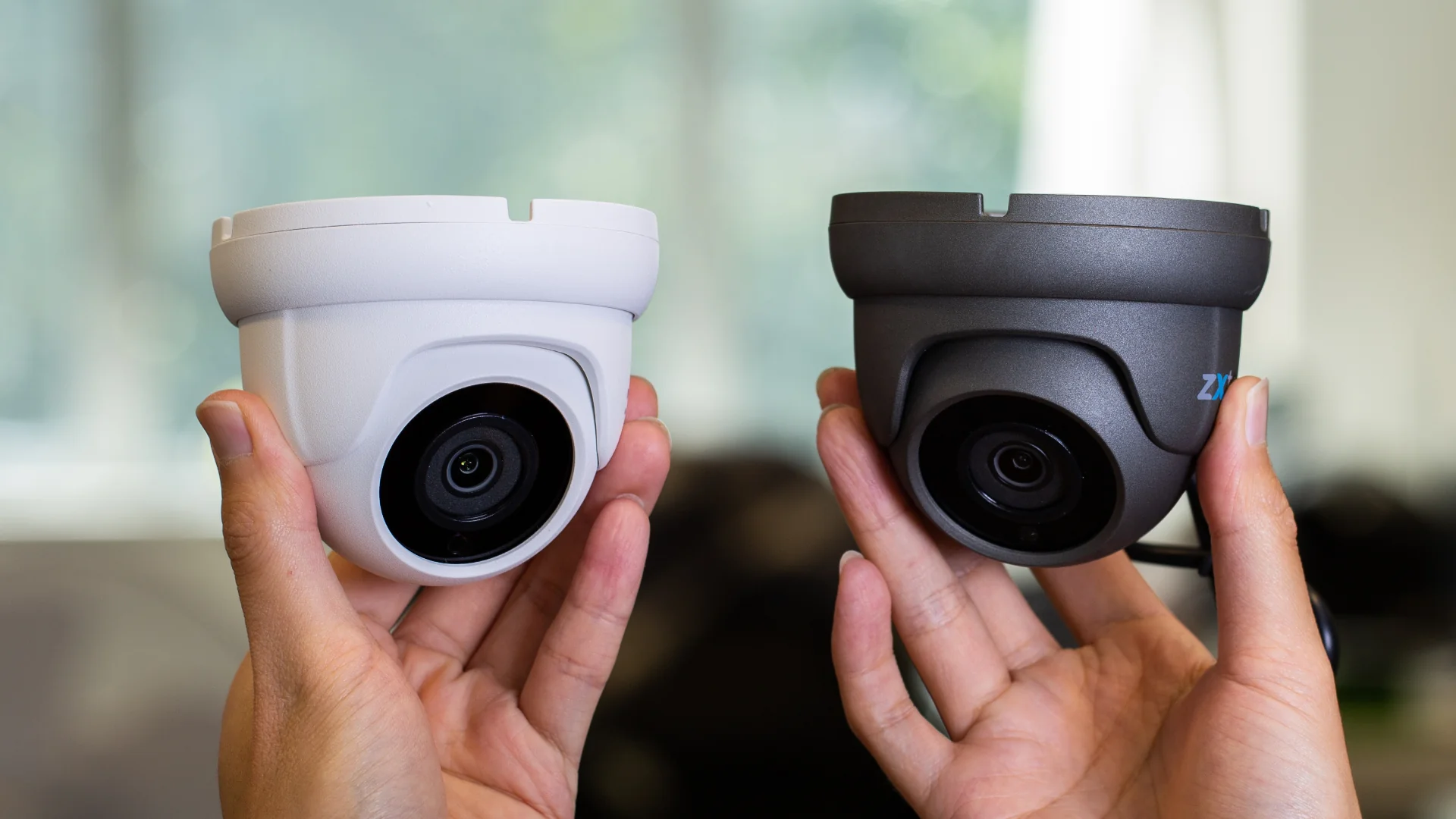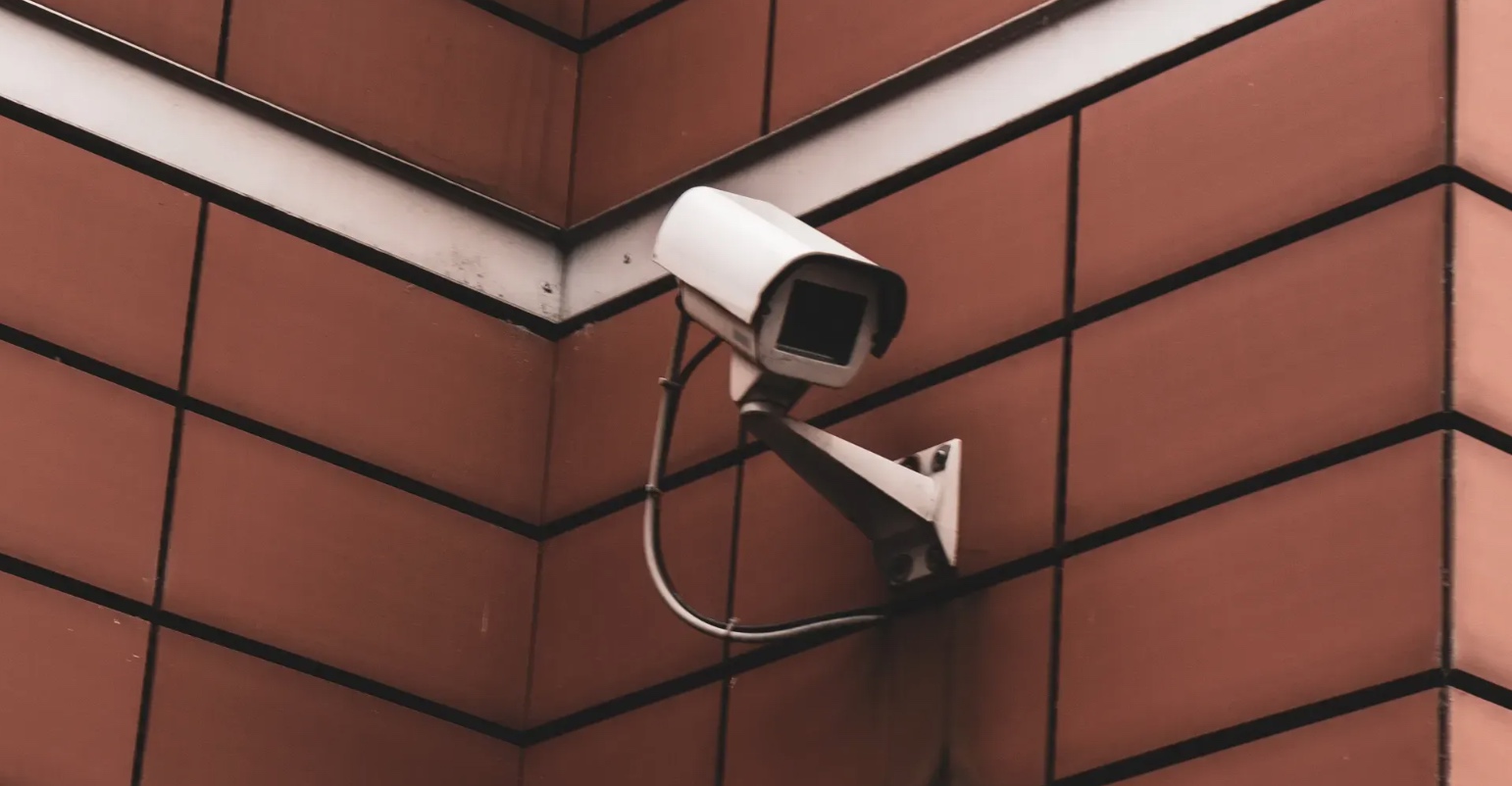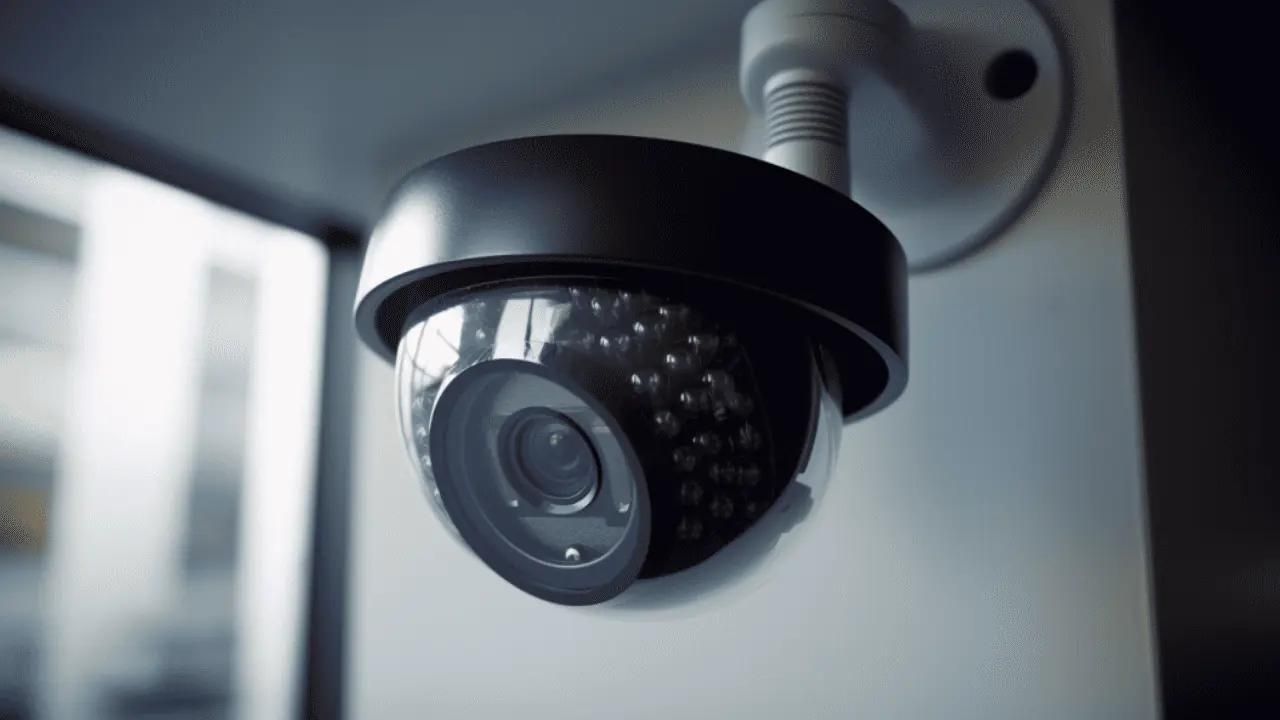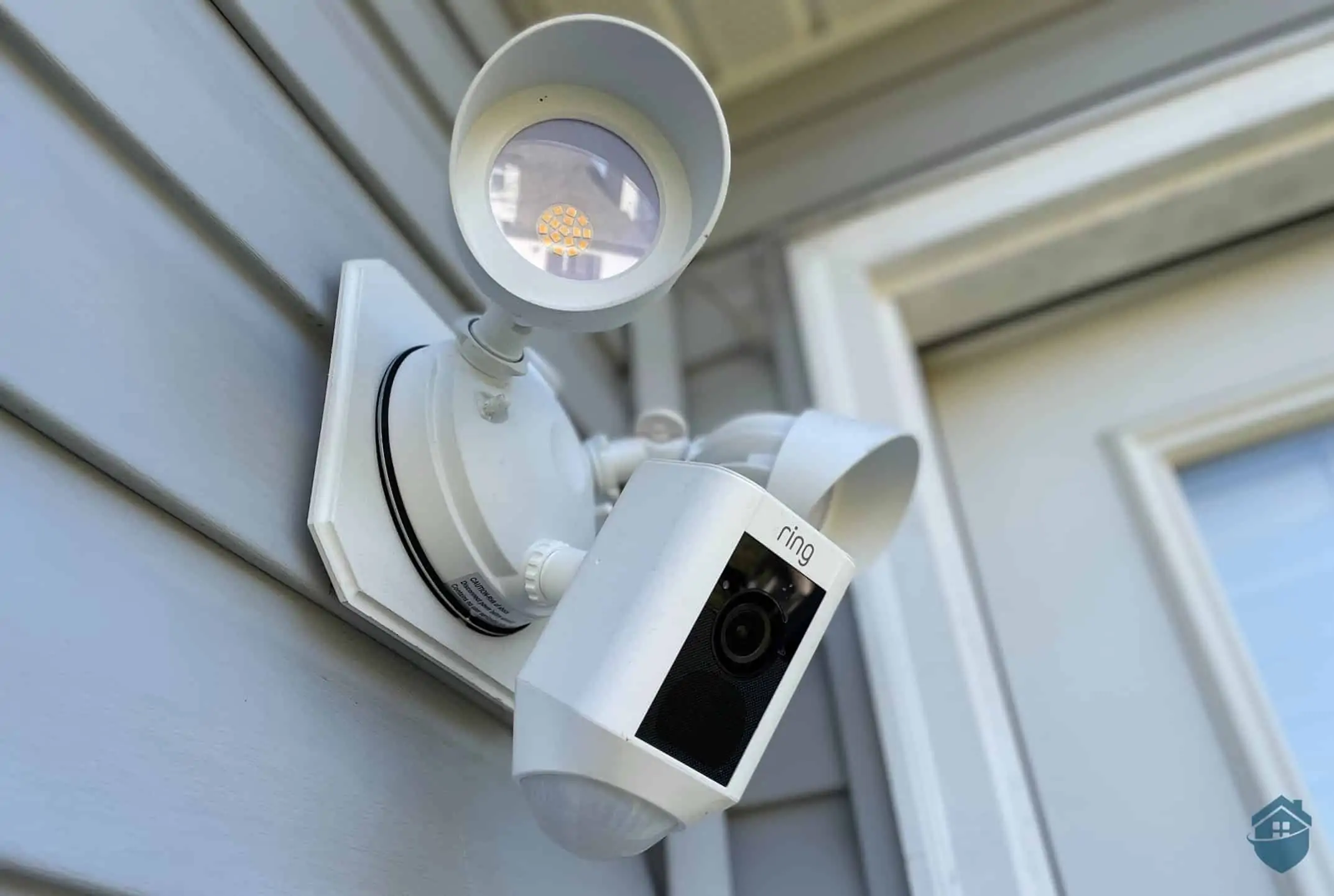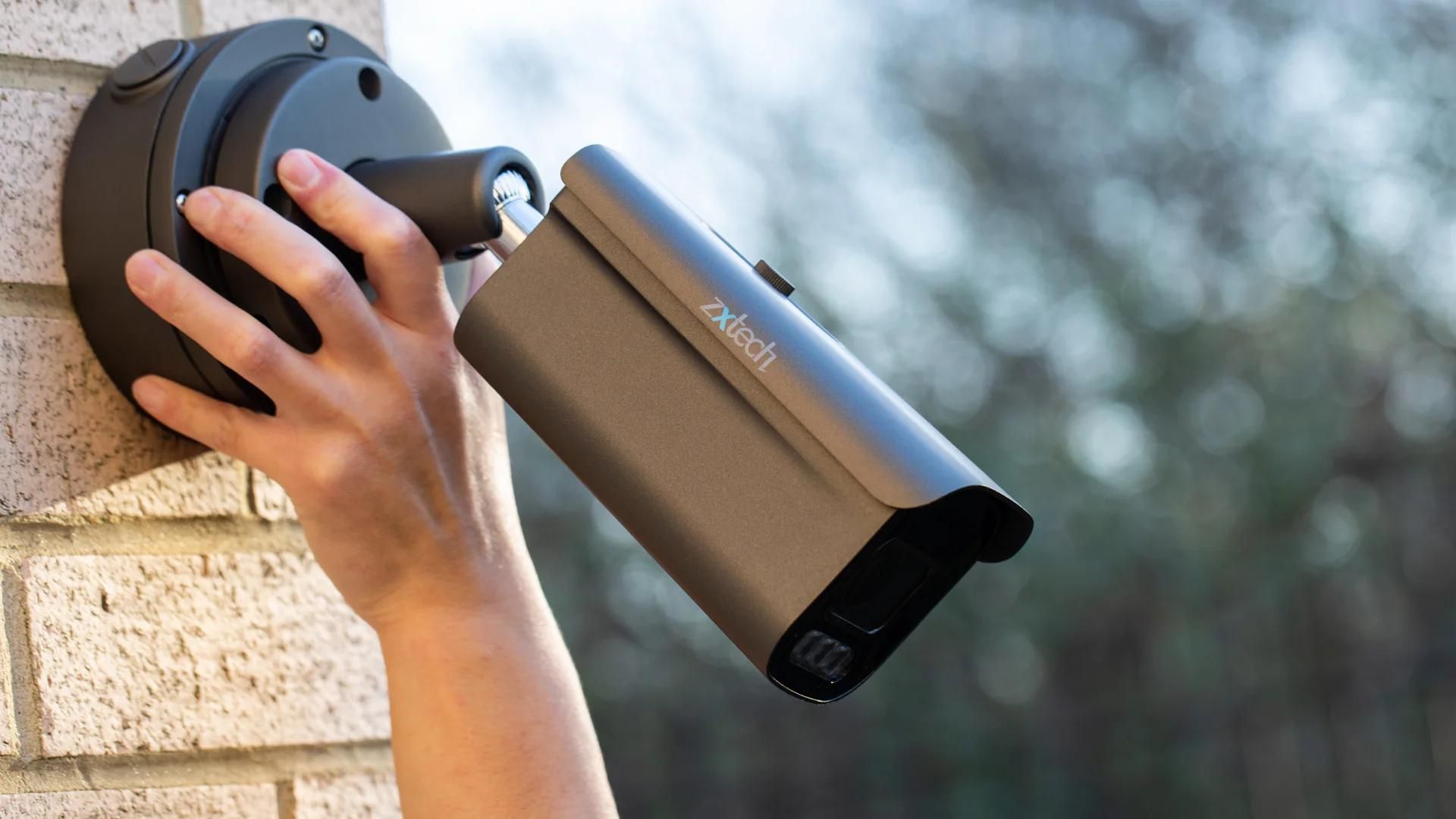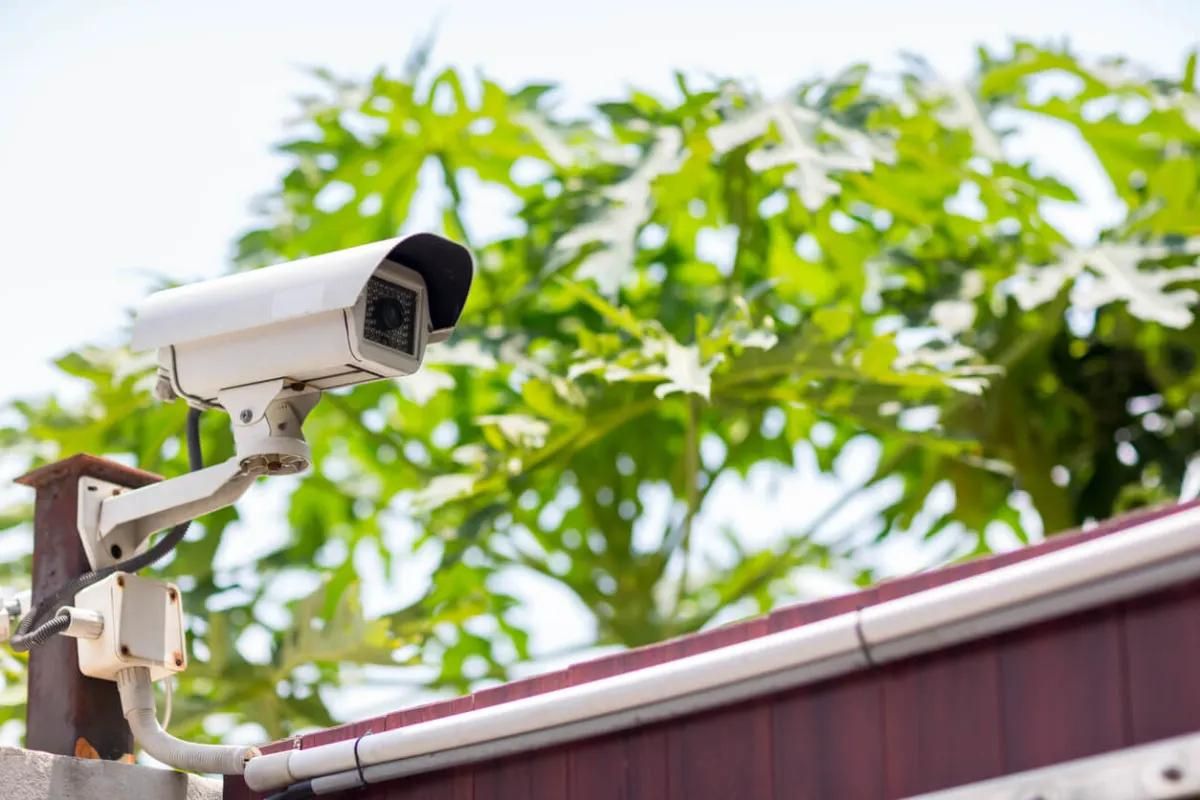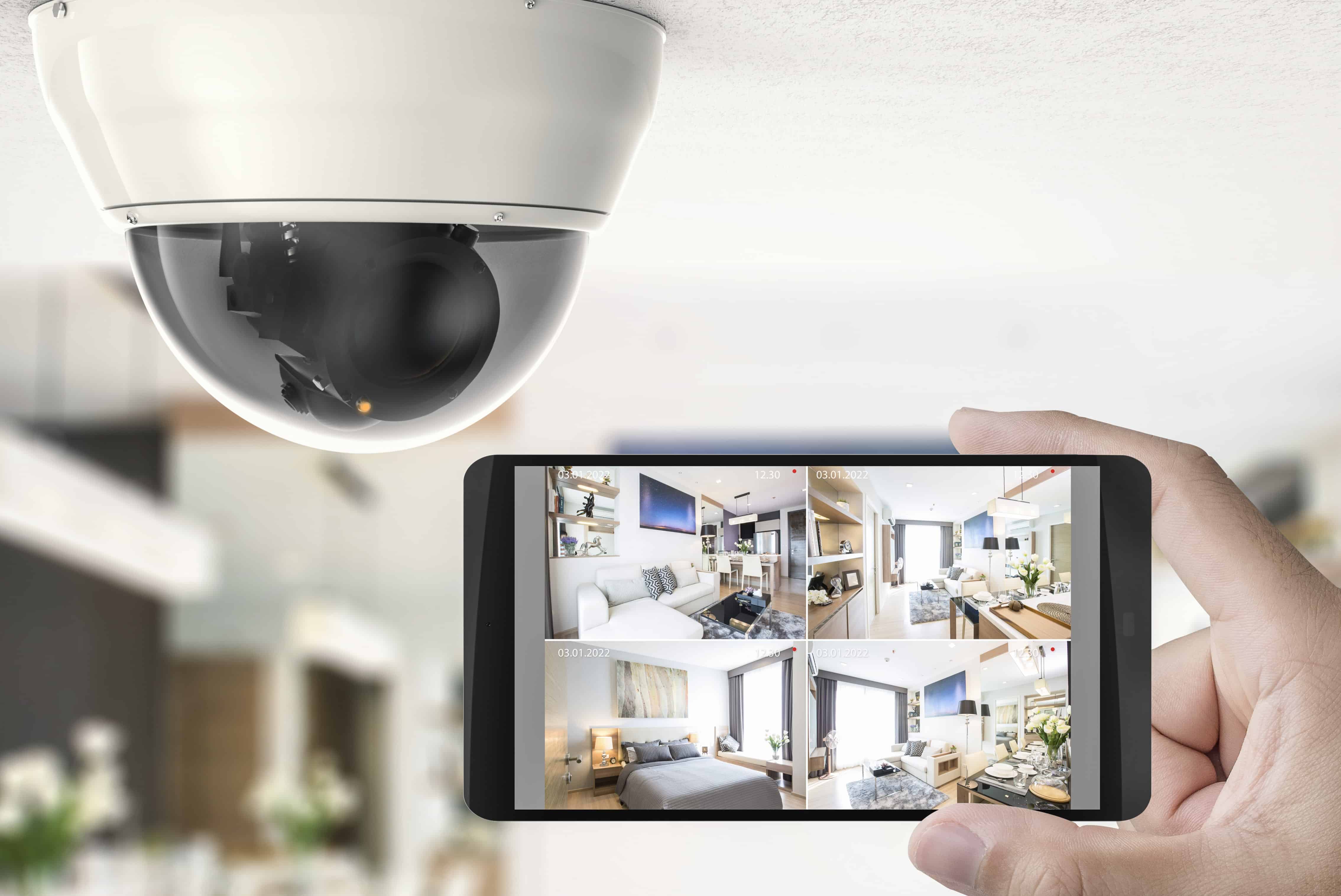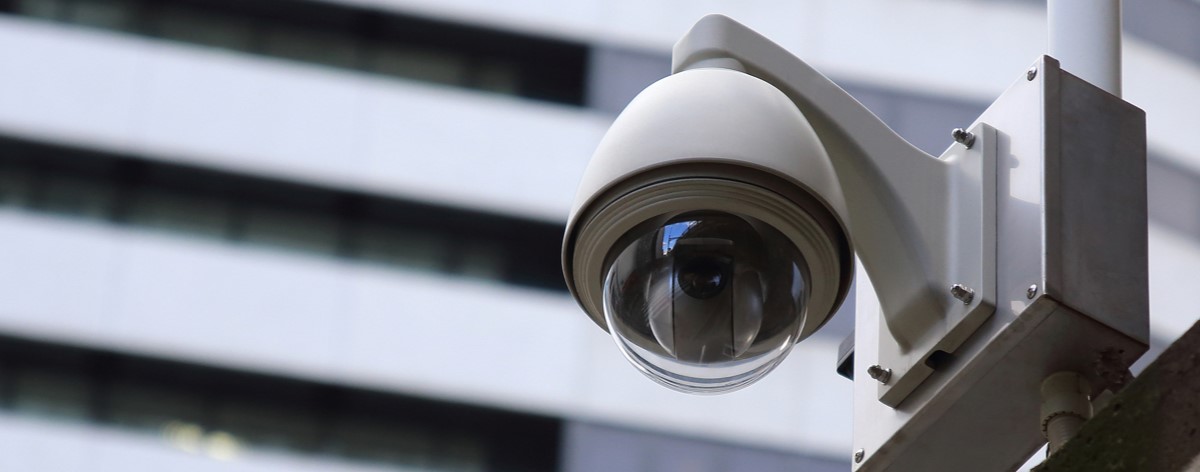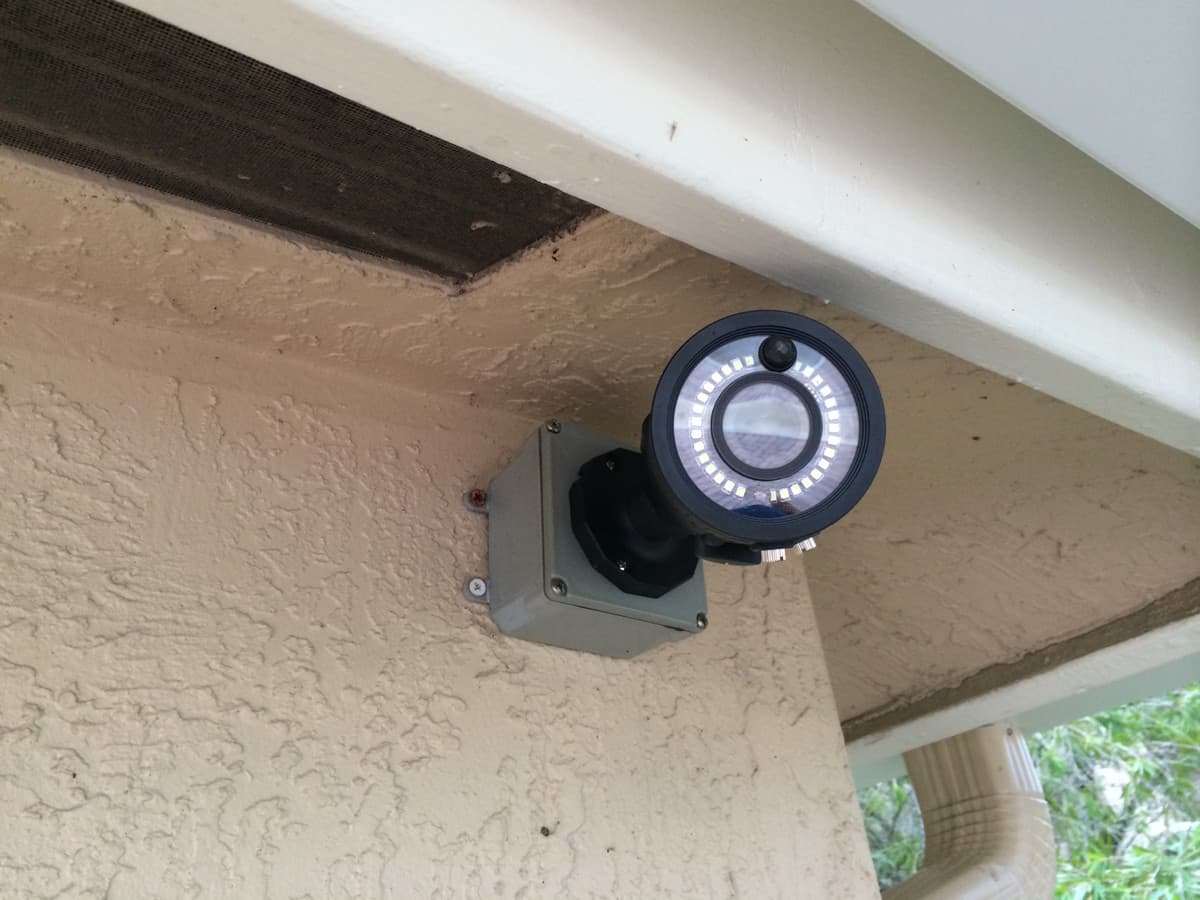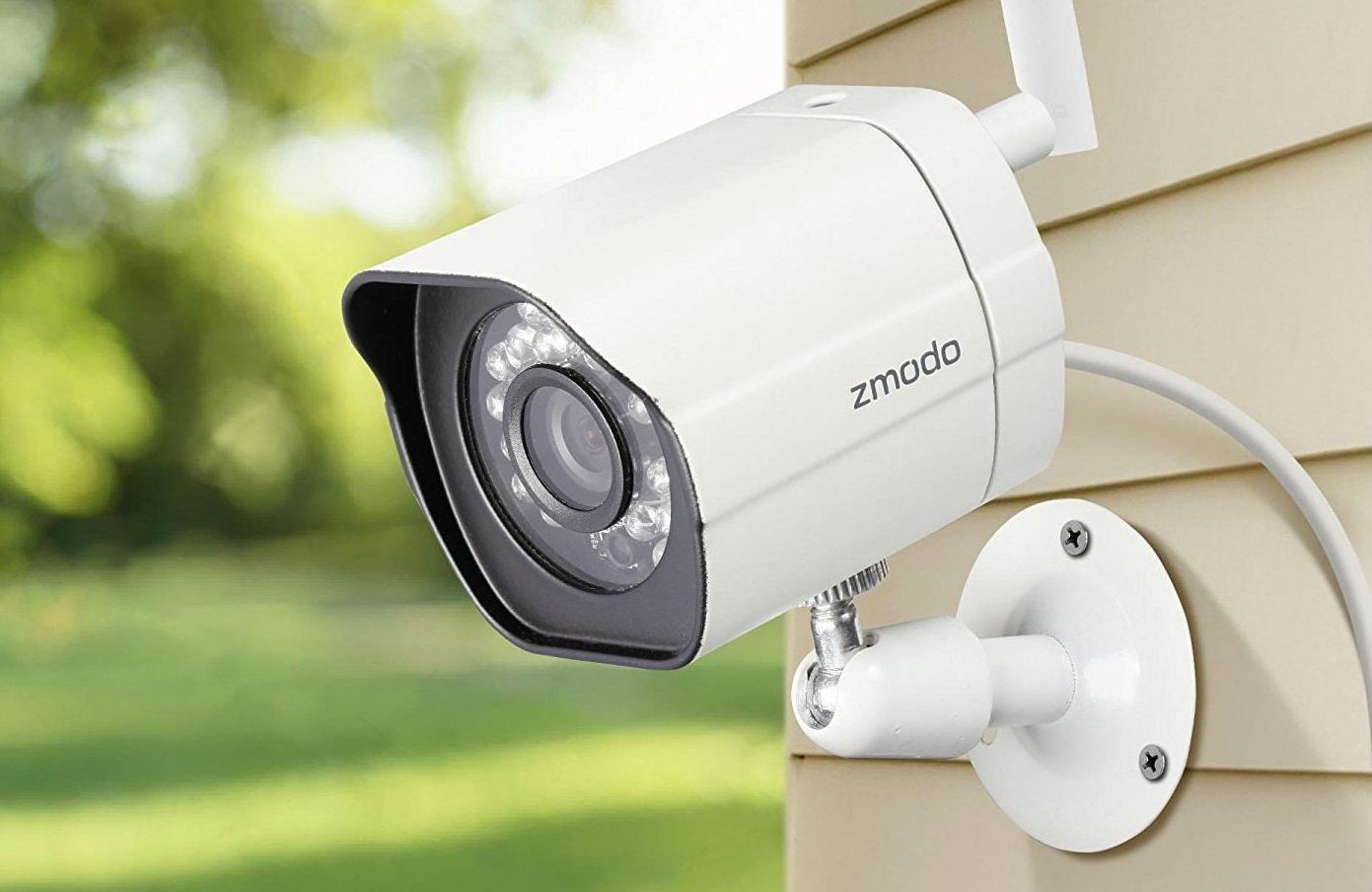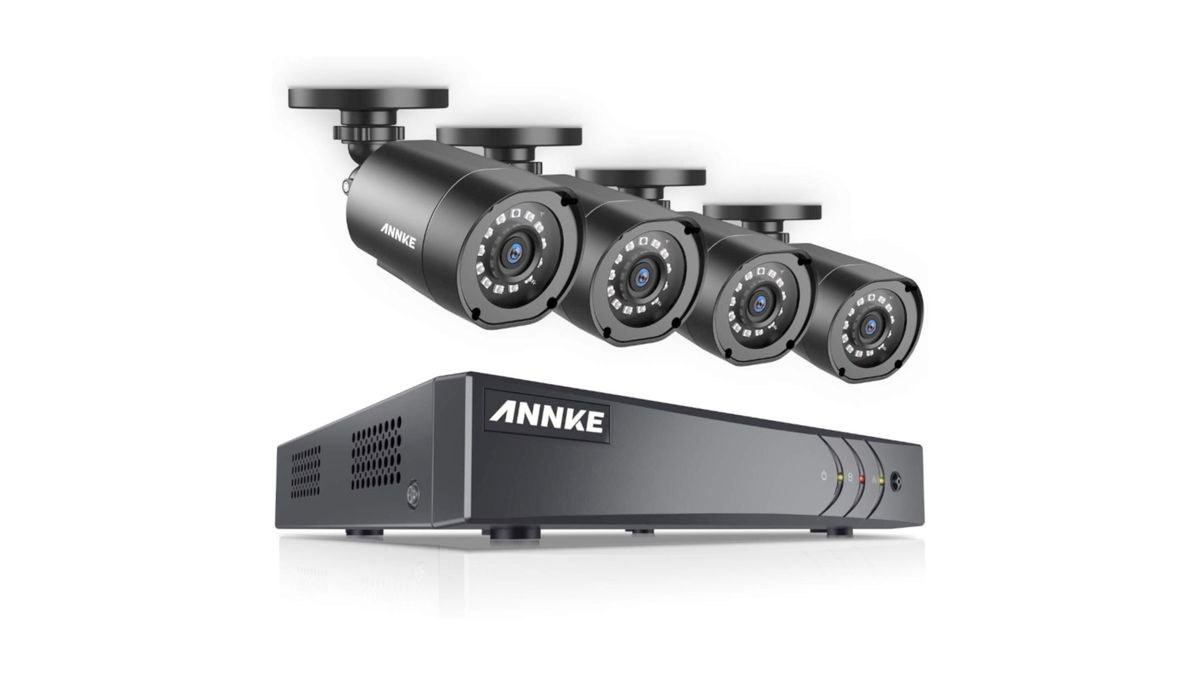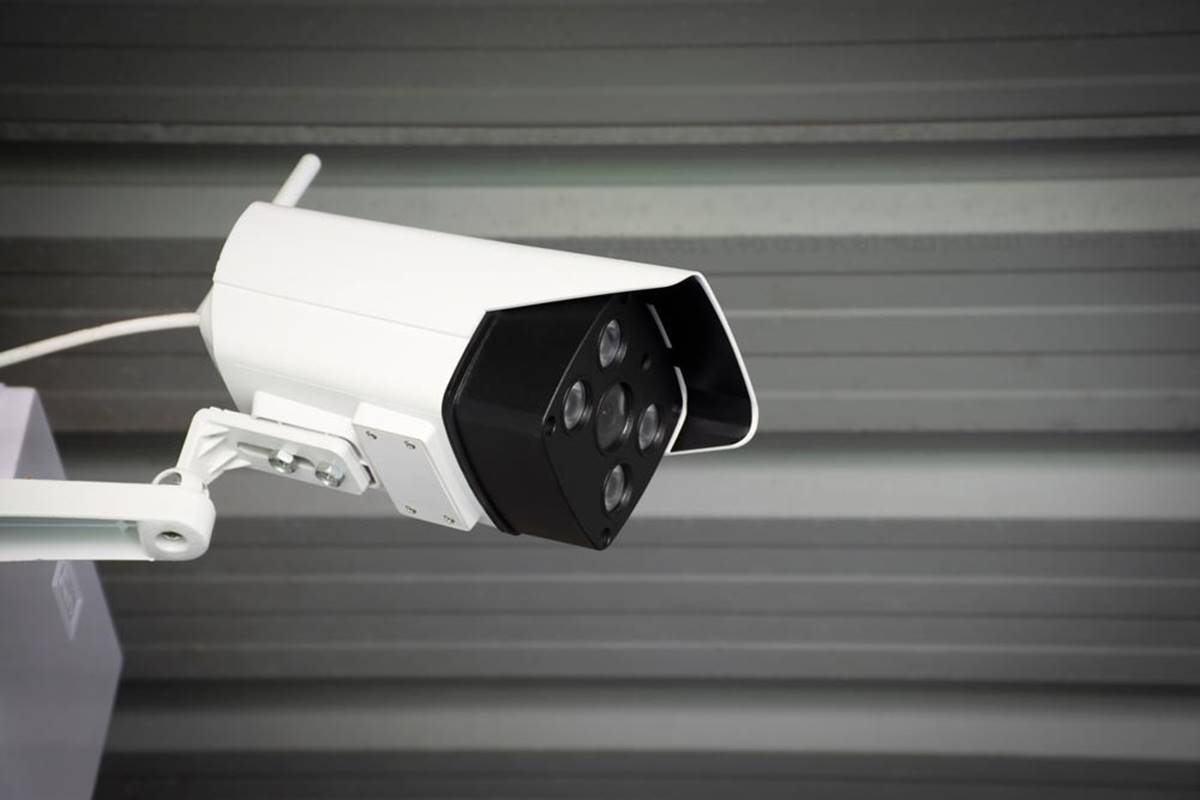Home>Home Security and Surveillance>What Is PTZ Security Camera
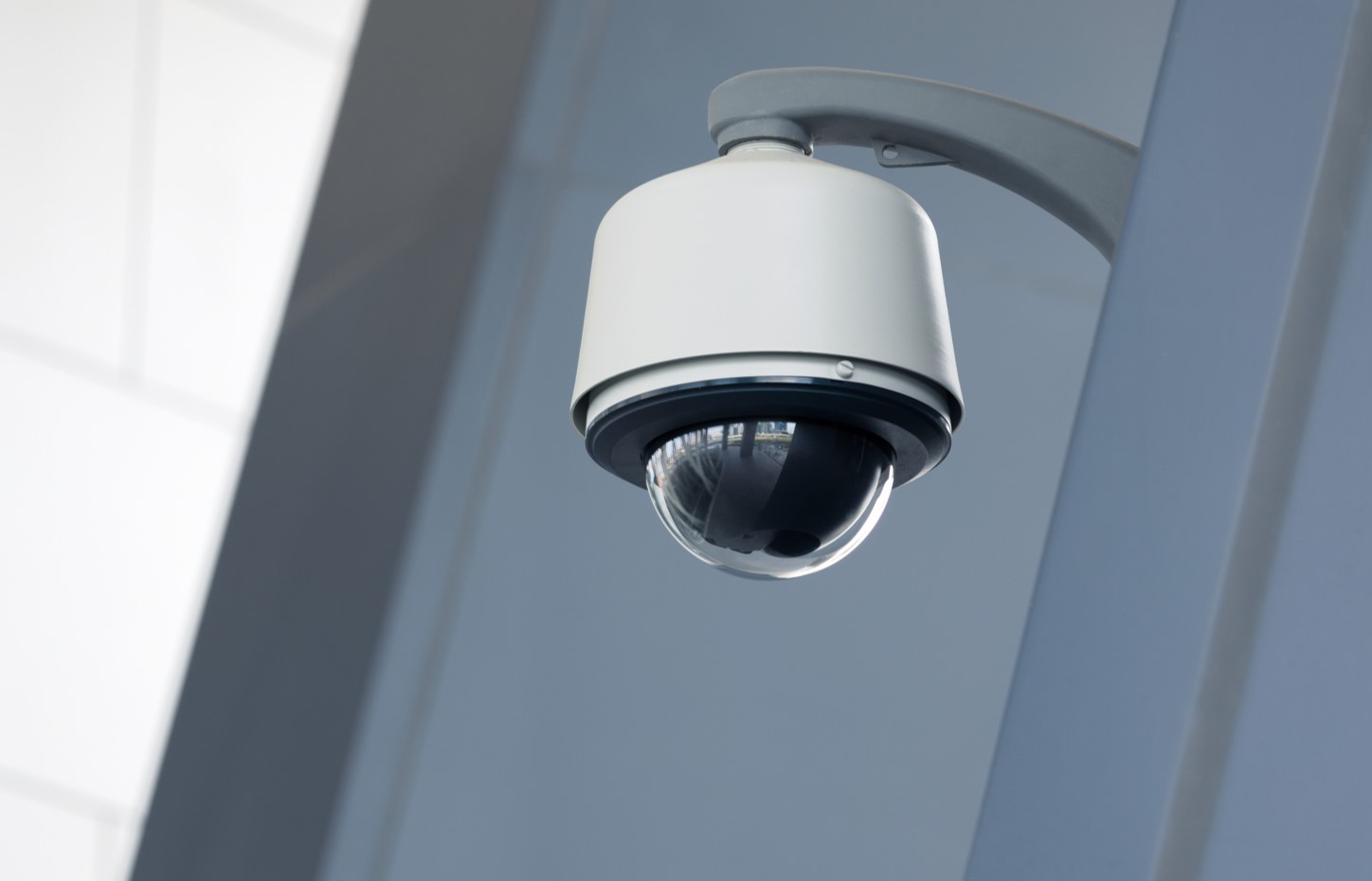

Home Security and Surveillance
What Is PTZ Security Camera
Modified: March 6, 2024
Learn about PTZ security cameras and their role in home security and surveillance. Enhance your security measures with these powerful cameras for ultimate peace of mind.
(Many of the links in this article redirect to a specific reviewed product. Your purchase of these products through affiliate links helps to generate commission for Storables.com, at no extra cost. Learn more)
Introduction
Home security is a top concern for homeowners worldwide. With advanced technology and the rise of smart homes, there are now numerous options available to enhance the security of your property. One of the most effective and versatile solutions is the PTZ (Pan-Tilt-Zoom) security camera.
A PTZ security camera offers a range of features that can greatly enhance your home surveillance system. Whether you want to monitor your property, deter potential intruders, or capture detailed footage, a PTZ camera can be an invaluable tool.
In this article, we will explore the world of PTZ security cameras. We will define what a PTZ camera is, discuss how it works, highlight its unique features and benefits, and provide guidance on how to choose the right PTZ camera for your needs.
So, let’s dive into the world of PTZ security cameras and discover how they can enhance the security of your home.
Key Takeaways:
- PTZ security cameras offer flexible monitoring with pan, tilt, and zoom capabilities, providing wide area coverage, clear details, and remote control for enhanced home security.
- When choosing a PTZ camera, consider factors like resolution, zoom range, weather resistance, and control options to ensure it meets your specific surveillance needs and integrates seamlessly with your existing system.
Read also: 8 Amazing Ptz Security Cameras For 2024
Definition of PTZ Security Camera
A PTZ security camera, also known as a pan-tilt-zoom camera, is a surveillance device that offers flexibility and versatility in monitoring and capturing video footage. Unlike fixed cameras, PTZ cameras have the ability to pan horizontally (left to right), tilt vertically (up and down), and zoom in and out to capture a wide range of views and details.
The pan function allows the camera to rotate horizontally, covering a wide area and providing a 360-degree view. The tilt function enables the camera to tilt up and down, making it easier to monitor specific areas and heighten surveillance at different angles. The zoom function allows the camera to zoom in for close-ups or zoom out for a larger field of view.
PTZ cameras are typically controlled remotely, either manually or through automated presets. The remote control can be done through a dedicated control panel, a computer, or even a smartphone app. This makes it easy to adjust the camera’s position, view, and zoom level based on specific surveillance needs.
PTZ cameras are available in various types, including dome cameras, bullet cameras, and even hidden cameras. They are commonly used in both indoor and outdoor settings, such as residential properties, businesses, parking lots, and public spaces.
Overall, a PTZ security camera offers unmatched flexibility and control, allowing users to actively monitor their premises and capture high-quality footage from different angles. Whether you need to track moving objects, zoom in on suspicious activities, or scan large areas, a PTZ camera provides the versatility needed to enhance your home security system.
How PTZ Security Cameras Work
PTZ security cameras utilize a combination of mechanical components, electronics, and software to provide comprehensive surveillance capabilities. To understand how these cameras work, let’s dive into the key components and their functionalities:
- Pan and Tilt Mechanism: PTZ cameras have motorized pan and tilt mechanisms that allow them to move horizontally and vertically. These mechanisms are controlled either manually through a remote control or automatically through pre-programmed settings. By adjusting the pan and tilt functions, the camera can cover a wide area and focus on specific zones within that area.
- Zoom Capability: PTZ cameras are equipped with optical zoom lenses that enable users to adjust the camera’s focal length and therefore the level of magnification. This zoom feature allows users to capture clear and detailed images of objects or individuals located at a distance from the camera. Some PTZ cameras also offer digital zoom capabilities, which digitally enhance the image, but at the cost of reduced clarity.
- Image Stabilization: To counteract any shaking or vibrations caused by the movement of the camera or external factors like wind, PTZ cameras incorporate image stabilization technology. This helps ensure that the video footage remains steady and focused, allowing for improved surveillance even when the camera is in motion.
- Remote Control: PTZ cameras can be controlled remotely, either through a dedicated control panel or via software applications on a computer or mobile device. This remote control functionality allows users to adjust the camera’s positioning, angle, and zoom level, providing real-time monitoring and customization based on specific surveillance requirements.
- Presets and Tours: PTZ cameras often come with preset positions and tours, which allow users to program specific positions and sequences for the camera to automatically follow. This is particularly useful in scenarios where continuous monitoring of specific areas is required or when multiple areas need to be surveyed within a given time frame. With presets and tours, users can easily switch between pre-defined positions or schedule the camera to move in a pre-determined pattern.
In summary, PTZ security cameras work by utilizing mechanical pan and tilt mechanisms, optical zoom lenses, image stabilization technology, and remote control functionality. This combination of features allows users to monitor and capture surveillance footage from various angles, adjust the zoom level for detailed views, and control the camera’s movements remotely for effective and efficient surveillance.
Features and Benefits of PTZ Security Cameras
PTZ (Pan-Tilt-Zoom) security cameras offer a wide range of features and benefits that make them highly advantageous for home security. Let’s explore some of these key features and the benefits they provide:
- 360-Degree Coverage: One of the major advantages of PTZ cameras is their ability to pan horizontally and provide a full 360-degree view. This wide coverage ensures that no blind spots are left, allowing for comprehensive surveillance of your property.
- Flexible Monitoring: With the pan and tilt functionality, PTZ cameras allow you to monitor specific areas and objects of interest in real-time. Whether it’s tracking a person walking across your lawn or monitoring the entrance of your home, PTZ cameras provide the flexibility to adjust the camera’s position and focus on specific details.
- Zoom Capability: PTZ cameras come equipped with optical zoom lenses, enabling you to zoom in and capture clear and detailed video footage of objects or individuals at a distance. This zoom capability is invaluable for identifying faces, license plates, or other details that may assist in investigations or provide evidence if an incident occurs.
- Wide Dynamic Range (WDR): Many PTZ cameras feature WDR technology, which allows the camera to handle a wide range of lighting conditions. This ensures that the camera can capture clear and well-exposed images even in challenging lighting environments, such as when there are bright sunlight and deep shadows in the same scene.
- Auto-Tracking: Some PTZ cameras offer intelligent auto-tracking capabilities that automatically follow moving objects within the camera’s field of view. This feature is particularly useful when you want to track someone or something without the need for manual control.
- Remote Control and Mobile Access: PTZ cameras can be controlled remotely through a control panel or via software applications on your computer or mobile device. This allows you to adjust the camera’s position, angle, and zoom level at any time and from anywhere, providing you with convenient and flexible monitoring capabilities.
- Presets and Tours: PTZ cameras often have the ability to set presets and tours, which allow you to program specific positions and sequences for the camera to automatically follow. This feature is helpful when you want the camera to continuously monitor specific areas or sweep through multiple locations within a defined timeframe.
- Smart Motion Detection: Many PTZ cameras are equipped with advanced motion detection technology that can differentiate between genuine movement and false alarms triggered by factors like wind or changes in lighting. This helps to minimize false alerts and ensures that you are alerted only when there is actual activity in the monitored area.
In summary, the features and benefits of PTZ security cameras include wide area coverage, flexible monitoring capabilities, zoom functionality, wide dynamic range, auto-tracking, remote control and mobile access, presets and tours, and smart motion detection. These features combine to provide enhanced monitoring, greater control, and improved security for your home.
Applications of PTZ Security Cameras
PTZ (Pan-Tilt-Zoom) security cameras have gained popularity across various applications due to their versatility and wide range of functionalities. Let’s explore some of the key applications where PTZ cameras excel:
- Residential Security: PTZ cameras are an excellent choice for residential security, offering homeowners the ability to monitor the perimeter of their property, entrances, driveways, and other areas of concern. With their pan, tilt, and zoom capabilities, these cameras can capture clear and detailed video footage, ensuring the safety and protection of your home and family.
- Business and Commercial Security: Many businesses and commercial establishments rely on PTZ cameras to maintain security and surveillance. Whether it’s monitoring large retail spaces, warehouses, parking lots, or office premises, PTZ cameras provide wide coverage and the ability to zoom in and track suspicious activity, ensuring the safety of employees, customers, and assets.
- Public Spaces: PTZ cameras are commonly used in public spaces such as parks, stadiums, transportation hubs, and shopping centers. Their ability to monitor large areas and focus on specific zones or individuals helps enhance public safety and security, deterring potential criminal activity and providing valuable evidence in case of incidents.
- Industrial and Construction Sites: PTZ cameras are ideal for monitoring industrial sites, construction projects, and critical infrastructure. With their rugged build, weather resistance, and ability to scan large areas, these cameras can help prevent theft, monitor worksite activities, and ensure compliance with safety regulations.
- Elderly Care Facilities: PTZ cameras are also utilized in elderly care facilities to ensure the safety and well-being of residents. These cameras help staff members monitor common areas, entrances, and hallways, allowing them to respond quickly to any potential safety concerns or incidents.
Overall, PTZ security cameras find applications in a wide range of settings, including residential properties, businesses, public spaces, industrial sites, construction projects, and elderly care facilities. Their versatility, ability to cover a wide area, and capture detailed footage make them a valuable tool for enhancing security and surveillance in various environments.
When choosing a PTZ security camera, look for one with high optical zoom and pan/tilt range for better coverage. Also, consider cameras with advanced features like motion tracking and preset tours for added security.
Read more: What Are Security Cameras
Factors to Consider when Choosing a PTZ Security Camera
Choosing the right PTZ (Pan-Tilt-Zoom) security camera for your specific needs requires careful consideration of several important factors. Here are some key factors to keep in mind when selecting a PTZ camera:
- Camera Resolution: The resolution of the camera will determine the clarity and level of detail in the captured video. It is important to choose a PTZ camera with a high-resolution sensor, such as 1080p or higher, for clear and sharp images.
- Optical Zoom Range: Consider the optical zoom capabilities of the camera, as it will determine how close you can zoom in on a subject while maintaining image quality. Look for cameras with a substantial optical zoom range, such as 20x or higher, for greater flexibility in capturing distant objects.
- Low-Light Performance: If you require surveillance in low-light conditions, ensure that the PTZ camera has excellent low-light performance. Look for cameras with features like wide dynamic range (WDR) and infrared (IR) illuminators to enable clear imaging in challenging lighting situations.
- PTZ Speed and Range: Consider the speed and range of the camera’s pan and tilt functions. A faster PTZ speed allows for quicker coverage of the monitored area, while a wider tilt and pan range provides broader coverage and flexibility in positioning the camera.
- Weather Resistance: If you plan to install the PTZ camera outdoors, ensure that it has adequate weather resistance, including protection against rain, dust, and extreme temperatures. Look for cameras with an IP66 or higher weatherproof rating for reliable performance in various weather conditions.
- Remote Control Options: Consider the available options for remote control of the PTZ camera. Look for cameras that offer multiple control methods, such as a dedicated control panel, computer software, or mobile apps. This allows for convenient and flexible control over the camera’s movements and settings.
- Integration with Existing Systems: If you have an existing surveillance system, consider whether the PTZ camera can integrate seamlessly with your current setup. Compatibility with your recording devices, software, and network infrastructure is essential for smooth operation and easy integration.
- Advanced Features: Evaluate additional advanced features that may be useful for your specific needs. This could include features like auto-tracking, intelligent motion detection, preset positions, and tours. Assess whether these features align with your surveillance requirements and enhance the camera’s performance.
By carefully considering these factors, you can select a PTZ security camera that meets your specific needs and provides reliable and effective surveillance for your home or business.
Installation and Maintenance of PTZ Security Cameras
Proper installation and regular maintenance are essential for maximizing the performance and longevity of PTZ (Pan-Tilt-Zoom) security cameras. Here are some important guidelines to follow for the successful installation and maintenance of PTZ cameras:
Installation:
- Camera Placement: Carefully choose the location for your PTZ camera to ensure maximum coverage of the desired area. Consider factors such as line of sight, potential obstructions, and areas of interest that need monitoring.
- Power and Connectivity: Ensure that the cameras are properly powered and connected to a reliable power source. It is recommended to use a surge protector or uninterruptible power supply (UPS) to safeguard against power surges or outages.
- Mounting: Use sturdy mounting brackets or appropriate mounting options to securely install the PTZ camera. This will help minimize vibrations and ensure stable positioning even in windy conditions.
- Cables and Wiring: Properly route and protect the cables and wiring for the PTZ camera. Use weatherproof conduit or protective sleeves to prevent damage and ensure reliability of the connections.
- Configuration and Calibration: Follow the manufacturer’s instructions to properly configure and calibrate the PTZ camera. This includes setting up the pan and tilt limits, adjusting the zoom range, and configuring any presets or tours that you may require.
Maintenance:
- Cleaning: Regularly clean the camera housing and lens to remove dust, dirt, and grime. Use a soft cloth or brush along with a mild cleaning solution to avoid scratching the lens or damaging the camera.
- Inspection: Periodically inspect the camera and its components for any signs of wear, damage, or loose connections. Check the housing, mounting brackets, cables, and connectors to ensure everything is intact and functioning correctly.
- Firmware Updates: Stay up to date with the manufacturer’s firmware updates for your PTZ camera. This ensures that you have the latest features, bug fixes, and security enhancements to maintain optimal performance.
- Testing: Regularly test the PTZ camera’s functionality, including its pan, tilt, and zoom capabilities, as well as its motion detection and tracking features. This will help identify any potential issues or malfunctions that need attention.
- Professional Servicing: If you encounter any technical difficulties or require in-depth maintenance, it is advisable to seek professional servicing from authorized technicians to ensure proper diagnosis and resolution of any issues.
By following these installation and maintenance guidelines, you can ensure that your PTZ security cameras remain in optimal working condition and continue to provide reliable surveillance for your home or business.
Comparison of PTZ Security Cameras with Other Types of Surveillance Cameras
When it comes to choosing a surveillance camera for your home or business, there are various options available. Let’s compare PTZ (Pan-Tilt-Zoom) security cameras with other types of surveillance cameras to understand their unique characteristics and benefits:
Fixed Cameras:
Fixed cameras, as the name suggests, are stationary and provide a fixed field of view. While they may be suitable for monitoring specific areas, they lack the flexibility and coverage offered by PTZ cameras. PTZ cameras, on the other hand, can pan, tilt, and zoom, providing a wider range of coverage and the ability to focus on specific points of interest.
Dome Cameras:
Dome cameras are characterized by their dome-shaped housing, which allows for discreet installation and a wider coverage area. While dome cameras offer a fixed field of view, some models have pan and tilt functionality. However, the pan and tilt range of a PTZ camera far surpasses that of a dome camera, giving PTZ cameras an advantage in terms of flexibility and coverage.
Bullet Cameras:
Bullet cameras are typically smaller and cylindrical in shape, making them suitable for outdoor installations. They provide a fixed field of view and are more discreet than PTZ cameras. However, bullet cameras lack the pan, tilt, and zoom capabilities of PTZ cameras, limiting their ability to adjust the viewing angle and capture detailed footage of distant objects.
Wireless Cameras:
Wireless cameras offer the convenience of easy installation and flexibility in terms of placement. They can be connected to your home or business network, allowing for remote access and monitoring. While some wireless cameras offer pan and tilt functionality, PTZ cameras provide superior control and coverage options, making them more effective for monitoring larger areas.
Overall, PTZ cameras stand out due to their ability to pan, tilt, and zoom, providing a greater range of coverage and flexibility compared to other types of surveillance cameras. The ability to adjust the camera’s position and zoom level remotely further enhances their effectiveness. However, it is important to consider specific surveillance needs and goals when selecting the most appropriate camera type for your security requirements.
PTZ Security Camera Buying Guide
If you are considering investing in a PTZ (Pan-Tilt-Zoom) security camera, it’s important to make an informed decision to ensure that you select the right camera for your specific needs. This buying guide will help you navigate the key factors to consider:
- Camera Specifications: Pay attention to important camera specifications such as resolution, optical zoom range, low-light performance, and PTZ speed. Higher resolution and greater zoom capabilities will provide clearer and more detailed images, while strong low-light performance is crucial for monitoring in challenging lighting conditions.
- Mounting Options: Consider the mounting options available for the PTZ camera. It should be compatible with your desired installation location, whether it’s wall-mounted, pole-mounted, or ceiling-mounted. Ensure that the camera’s mounting options align with your specific installation requirements.
- PTZ Control Options: Evaluate the available methods for controlling the PTZ camera. Look for cameras that offer remote control through various devices such as control panels, computer software, or mobile apps. This will provide convenient and flexible control over the camera’s movements and settings.
- Weather Resistance: If you plan to install the PTZ camera outdoors, ensure that it has sufficient weather resistance to withstand different weather conditions. Look for cameras with an IP66 or higher weatherproof rating, which indicates resistance to dust and water ingress.
- Integration and Compatibility: Consider the compatibility of the PTZ camera with your existing surveillance system. Ensure that it can integrate seamlessly with your recording devices, network infrastructure, and software applications to facilitate easy installation and operation.
- Scalability: Evaluate the scalability options of the PTZ camera. Determine if additional cameras can be added to the system in the future if needed. This will allow for expansion and adapting to changing surveillance needs.
- Brand and Reputation: Research the reputation and reliability of the brand offering the PTZ camera. Look for trusted manufacturers with a proven track record in the security industry. Read customer reviews and seek recommendations from professionals to ensure you choose a reputable and dependable brand.
- Budget Considerations: Set a budget for your PTZ camera purchase and consider the features and specifications that align with your needs within that budget. Keep in mind that investing in a higher-quality camera may provide greater value and durability in the long run.
By carefully considering these factors, you can make an informed decision and select a PTZ security camera that meets your specific requirements. Always remember to thoroughly research and compare different models to ensure you choose a camera that provides reliable performance and enhances the security of your home or business.
Read more: What Is Security Camera
Conclusion
PTZ (Pan-Tilt-Zoom) security cameras offer a versatile and powerful solution for enhancing the security of your home or business. With their ability to pan, tilt, and zoom, these cameras provide a wide range of coverage, flexibility, and control, making them an invaluable tool in any surveillance system.
In this article, we explored the definition and workings of PTZ cameras, highlighting their unique features and benefits. We discussed their applications in various settings, including residential properties, businesses, public spaces, industrial sites, and elderly care facilities.
When considering a PTZ camera, it’s vital to evaluate important factors such as camera specifications, mounting options, PTZ control methods, weather resistance, compatibility, scalability, brand reputation, and budget considerations. This ensures that you make an informed decision and select a camera that suits your specific needs.
Proper installation and maintenance of PTZ cameras are essential for optimal performance and longevity. Following the manufacturer’s guidelines for installation, cleaning, inspection, firmware updates, and professional servicing will help ensure that your cameras are operating at their best.
While PTZ cameras excel in their capabilities, it’s important to note that they may not be the ideal choice for every scenario. Fixed cameras, dome cameras, bullet cameras, and wireless cameras each have their own advantages and may be more suitable for certain situations.
In conclusion, PTZ security cameras provide flexibility, control, and superior coverage that can greatly enhance your home or business security. By carefully considering your specific needs, selecting the right camera, and following proper installation and maintenance practices, you can have peace of mind knowing that you have a reliable and efficient surveillance system protecting your premises.
Frequently Asked Questions about What Is PTZ Security Camera
Was this page helpful?
At Storables.com, we guarantee accurate and reliable information. Our content, validated by Expert Board Contributors, is crafted following stringent Editorial Policies. We're committed to providing you with well-researched, expert-backed insights for all your informational needs.
